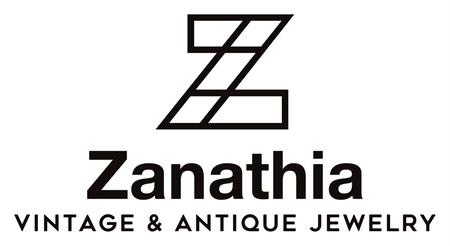The art of creating beaded jewelry can be traced to prehistoric times. 'Paleolithic Age' or 'Old Stone Age' beaded jewelry crafted with great detail and skill was commonly created by many cultures with organic materials. The natural and locally sourced materials used to make artisan beaded jewelry often took time and considerable detail by hand. These fantastic pieces of prehistoric history can tell us a lot about the tribes and cultures who created them. How the beaded jewelry was crafted can contain key clues that are important when analyzing the abilities and talents of prehistoric tribes.
(Bradshaw Rock Painting Found in North West Kimberly Region of Australia From The Paleolithic Age)
Examples of prehistoric beaded jewelry consist of various natural resources used for decoration. Early beaded jewelry in this period was made with bones, shells, and stones. Ostrich egg shells were often used in Paleolithic Era jewelry, and some of the earliest examples have been found in caves in North and South Africa and Siberia. The Nassarius shell beads are between 100,000-75,000 years old and were often made from sea snails. These beaded jewelry pieces were discovered in several regions, including North Africa, South Africa, and Israel. We can analyze how the early groups socially communicated and lived when handmade prehistoric adornments were found. Nassarius shell beads were used for various reasons, including trading with other tribes. These prehistoric tribes likely shared similar languages, personal values, skills, and sentimental items like beaded jewelry through trading and interaction with other groups.

(Ostrich eggshell beads found discovered in Border Cave in South Africa. Photo Courtesy of Lucinda Blackwell.)
As time passed, humans discovered more advanced ways to create beaded jewelry. During the Bronze Age (3000 BC-1200 BC), metalworking made immense progress. The Bronze Age includes three periods: The Early Bronze Age, Middle Bronze Age, and Late Bronze Age. Humans developed new ways to make metals more durable. The process of creating bronze included melting metals like copper, adding tin, then cooling it. This innovation helped many cultures across the globe use metals to create various other items. The Bronze Age not only introduced using metal for everyday uses and life but was also an innovative period in history for jewelry. Each society and culture began to create more advanced artistic metal jewelry in their way. Bronze jewelry consisted of intricate designs added to the metals, including twisting, spiraling, and forging. Gold and bronze metals showcased a high level of artisan skill and quality. Common Bronze Age designs in different cultural jewelry were the 'torc/torque' bracelet, half-moon-shaped earrings, and gorget necklaces created in the Late Bronze Age. The process of drilling holes into various stones and metals evolved during the Bronze Age. Different cultures often traded precious metals and new rocks with one another, and handcrafted jewelry created with rare beads became a trendy market globally. Bronze Age beaded jewelry was made in various sizes and shapes and included new decorative designs etched into the beads. Innovative processes such as double drilling allowed more detailed designs and a smoother process for holes to be created in beads.

(Late Bronze Age Beaded Amber Necklace and Metal Bracelets and Dress Fasteners.C. 900-700 BC. Museum of Archaeology)
The growing market for beaded jewelry was also used for trading purposes. In places like Ancient Africa, beaded jewelry was used as currency to buy crops and for ceremonial rituals.
In ancient Egypt, sentimental beaded jewelry created from precious stones like Lapis Lazuli, Carnelian, Turquoise, and quartz was found in the tombs of kings and queens. Ancient collar necklaces called '
wesekhs,' meaning 'the broad one,' were worn and consisted of beads shaped into tubular and teardrop designs. Often, beaded jewelry tells a story or represents symbolic messages in different cultures. These sentimental beads were intricately designed with specific patterns and detailing that defined other stories. Native American and African tribes like the Maasai in Kenya and Cherokee in North America have created beaded jewelry that can represent stories handed down from generation to generation, marital status, and childbirth.
(The Ancient Egyptian Beaded Collar of Queen Khnum-et, Flickr: Ancient Egyptian Jewelry)
(Antique handcrafted Baltic Amber beaded necklace from the Art Nouveau Era. Zanathia Jewelry Collection)
The mass production of beaded jewelry became popular during the 1800s and has continued to be one of the most sought-after markets for handcrafted jewelry worldwide. Presently, beaded jewelry is still a great collector's item due to its intricate detailing and time to create the pieces by hand. Many antique and vintage beaded jewelry adornments were made in a sentimental way that complements their historical value. Modernly, the preservation and importance of beaded jewelry from previous ages are still relevant in today's highly sought-after handcrafted market.







